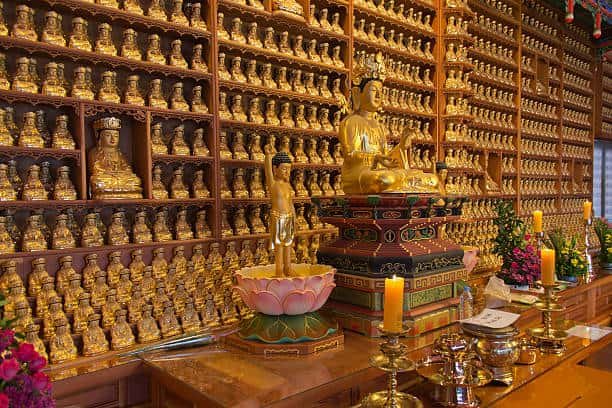1. Temples of Korea: Beauty of Korean Traditional Temples
Korean traditional temples, also known as “jongmyo,” have played a significant role in Korean culture and history for centuries. These temples are not only religious sites for Buddhist and Confucian practices, but they also serve as important cultural landmarks that showcase the artistic and architectural achievements of the Korean people.
Table of Contents
In this blog, we will embark on a journey to unravel the timeless beauty and cultural importance of Korean traditional temples, gaining insight into their architectural marvels, spiritual practices, and their role as cultural hubs.
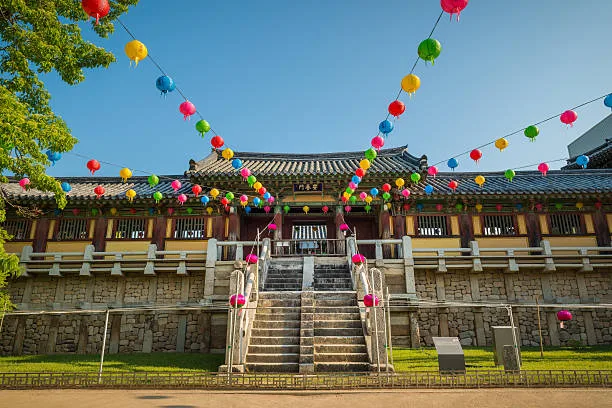
Korea, a land rich in history and cultural heritage, is home to a plethora of magnificent traditional temples. These sacred sites, often nestled amidst picturesque landscapes, hold profound significance within Korean society.
History of Korean Traditional Temples
The history of Korean traditional temples dates back to the Three Kingdoms period (57 BC-668 AD), when Buddhism was first introduced to Korea. During this time, the first Buddhist temples were constructed, and they were often located in mountainous areas, away from urban centers.
Over time, the construction of Buddhist temples became more elaborate, with the use of more sophisticated architectural techniques and ornate decorations. During the Goryeo Dynasty (918-1392 AD), Buddhist temples flourished, and many of the most famous temples in Korea were constructed during this period.
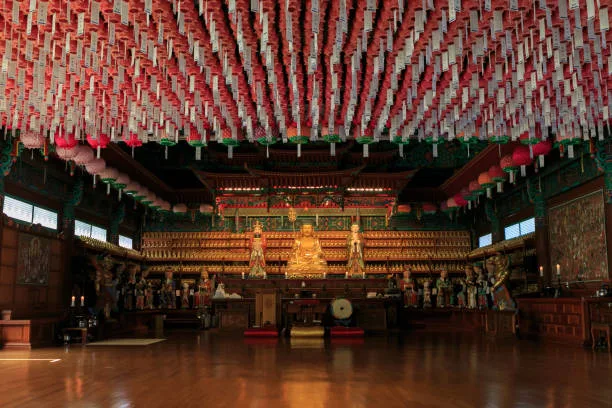
However, with the rise of Confucianism during the Joseon Dynasty (1392-1910 AD), many of the Buddhist temples were destroyed or converted into Confucian academies. It wasn’t until the late 19th century that Buddhism was once again allowed to flourish in Korea, and many of the temples that had been destroyed were rebuilt or restored.
The Architecture of Korean Traditional Temples
Korean traditional temples showcase a remarkable blend of architectural finesse and natural harmony. Influenced by Buddhism and Confucianism, these temples are meticulously designed to reflect the principles of balance, harmony, and spiritual enlightenment. The most iconic feature of these temples is the main hall or “Daeungjeon,” which serves as the central place for religious rituals and meditation. The intricate craftsmanship, vibrant colors, and detailed wood carvings of the Daeungjeon create an awe-inspiring ambiance, capturing the essence of Korean cultural aesthetics.
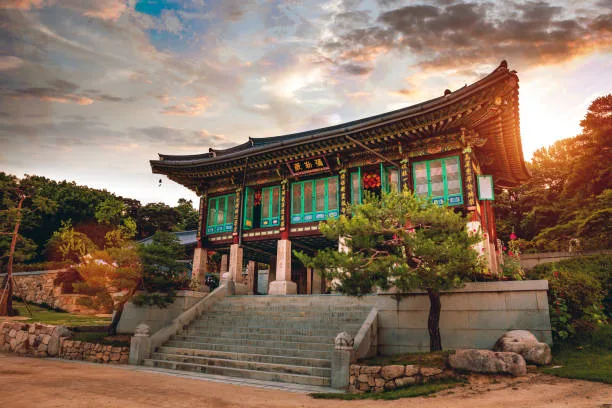
Furthermore, Korean temples often feature other architectural elements such as the pagoda, bell pavilion, and drum pavilion. Pagodas, with their multi-tiered structure, represent the hierarchy of the Buddhist cosmos and serve as landmarks for devotees. Bell pavilions house massive bronze bells, which are struck to mark significant moments in temple life. Drum pavilions, on the other hand, provide a rhythmic backdrop for various ceremonies and rituals.
Spiritual Practices
Korean traditional temples have long been places of spiritual solace and enlightenment. For centuries, Buddhist monks and nuns have inhabited these sacred spaces, dedicating their lives to meditation, study, and the pursuit of enlightenment. Temples offer a tranquil environment conducive to introspection and self-discovery, allowing visitors to escape the chaos of modern life and find inner peace.

The daily routines of the temple inhabitants revolve around the practice of Seon (Zen) meditation. Seon meditation involves focusing one’s mind, calming the thoughts, and cultivating mindfulness. Temples often offer meditation retreats and programs to the public, welcoming individuals seeking personal growth and spiritual rejuvenation.
Cultural Hubs
Korean traditional temples are not just places of worship and meditation but also serve as cultural hubs that preserve and promote various aspects of Korean heritage. Many temples house priceless treasures, including ancient Buddhist scriptures, statues, and paintings. These artifacts offer valuable insights into Korea’s artistic and religious traditions.
Additionally, temples often organize cultural events, festivals, and performances throughout the year. One of the most renowned festivals is the Lotus Lantern Festival, held annually to celebrate Buddha’s birthday. During this festival, vibrant lanterns adorn the temples and streets, creating a mesmerizing spectacle that attracts locals and tourists alike. Traditional music and dance performances showcase the beauty of Korean culture, fostering a sense of community and shared heritage.
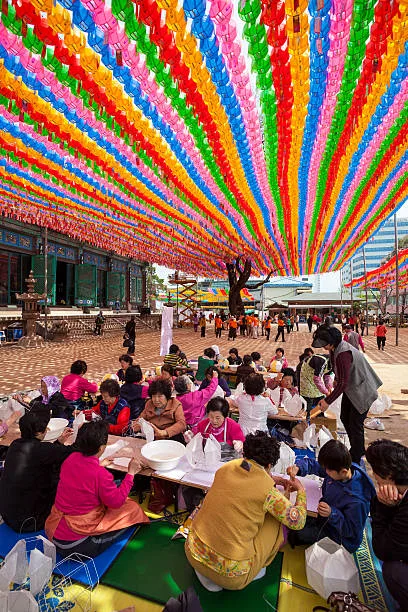
Furthermore, Korean temples have played a vital role in preserving and revitalizing traditional rituals and ceremonies. These temples serve as centers for religious education, passing down the teachings of Buddhism to future generations. Monastic rituals, such as the morning chanting ceremony or the “Yebul,” are open to the public, offering a glimpse into the rich tapestry of Korean spiritual practices.
Cultural Preservation
Traditional temples serve as guardians of Korean culture, housing priceless treasures that offer glimpses into the country’s artistic and religious traditions. Temples safeguard ancient Buddhist scriptures, intricate statues, and exquisite paintings, showcasing the artistic and historical significance of Korean heritage.
Festivals and Events
Korean temples come alive during various festivals and cultural events, captivating locals and tourists alike. The Lotus Lantern Festival, held annually to celebrate Buddha’s birthday, illuminates the temples and streets with vibrant lanterns, creating a dazzling spectacle. These events also feature traditional music and dance performances, allowing visitors to immerse themselves in the rich tapestry of Korean culture.
Educational Centers
Korean traditional temples serve as centers
Cultural Significance of Korean Traditional Temples
Korean traditional temples have played an important role in Korean culture for centuries, serving as centers of religious practice, as well as cultural and artistic expression. They are not only places of worship but also important cultural landmarks that embody the history and traditions of the Korean people.
One of the most significant cultural events associated with Korean traditional temples is the Lotus Lantern Festival, which is held every year in honor of Buddha’s birthday. The festival features colorful lanterns decorated with Buddhist symbols and is a celebration of enlightenment and wisdom.

In addition to their religious and cultural significance, Korean traditional temples have also played an important role in the preservation of traditional Korean arts and crafts. Many of the temples have workshops where traditional crafts such as pottery, paper-making, and calligraphy are taught and passed down from generation to generation.
Contemporary Role of Korean Traditional Temples
Today, Korean traditional temples continue to play an important role in contemporary Korean society. They are not only places of worship but also important cultural and tourist destinations that attract visitors from around the world.
Many of the temples offer meditation and mindfulness programs, which have become increasingly popular in modern society as people seek ways to reduce stress and improve their mental and physical health. The temples also host cultural events such as music and dance performances, as well as workshops on traditional crafts and cooking.
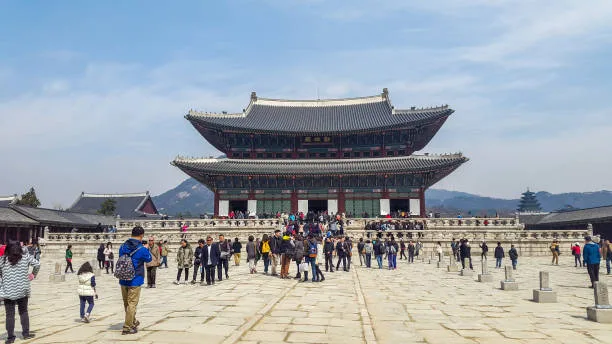
In addition, Korean traditional temples have also become an important part of the tourism industry in Korea. Many of the temples are located in scenic areas, and tourists are drawn to their natural beauty and cultural significance. The temples also offer a glimpse into the history and traditions of Korea, making them an important cultural attraction for visitors.
Read more South Korean Food:10 Dishes you must eat in South Korea.
Famous Korean Traditional Temples
- Bulguksa Temple – Located in Gyeongju, this temple was built in the 8th century and is one of the most famous temples in Korea. It is a UNESCO World Heritage Site and is renowned for its beautiful architecture and stunning views.
- Jogyesa Temple – Located in Seoul, this temple is the headquarters of the Jogye Order of Korean Buddhism. It is known for its beautiful lotus lanterns, which are on display during the Lotus Lantern Festival.
- Haeinsa Temple – Located in Hapcheon, this temple is home to the Tripitaka Koreana, a collection of Buddhist scriptures that were carved onto wooden blocks in the 13th century. It is a UNESCO World Heritage Site and is considered one of Korea’s most important cultural treasures.
- Seokguram Grotto – Located near Bulguksa Temple, this grotto is home to a large Buddha statue that was carved into the rock in the 8th century. It is also a UNESCO World Heritage Site and is considered a masterpiece of Buddhist art.
- Beopjusa Temple – Located in the mountains of Chungcheongbuk-do, this temple was built in the 7th century and is one of the oldest temples in Korea. It is known for its beautiful natural surroundings, including a waterfall and a giant stone pagoda.
- Tongdosa Temple – Located in Yangsan, this temple is one of the three sacred temples of Korean Buddhism. It is known for its extensive collection of Buddhist artifacts, including over 1,000 stone lanterns.
Conclusion
Korean traditional temples stand as testaments to the country’s rich history, spiritual traditions, and cultural heritage. These architectural marvels, with their intricate designs and serene environments, provide sanctuaries for meditation and self-reflection. Beyond their spiritual significance, these temples also serve as cultural hubs, preserving and promoting various facets of Korean heritage.
Visiting a Korean traditional temple offers a unique opportunity to immerse oneself in the country
